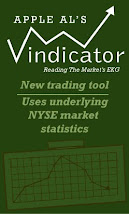Current short term count on the ES:
Sunday, March 20, 2016
Saturday, March 12, 2016
Saturday, 3/12/16 update
Should see a top to the move up off the Feb 11 low in the next week or so:
Since Inter W3 is shorter than Inter W1 in this count, the maximum travel for the current Inter W5 is the length of Inter W3. That point is at ES 2088.00, and represents the invalidation level for this count. The alternative in that case is the probability that the move is extending, hard to believe since the move up off the Feb 11 low exceeds 200 points (11% +) in the space of a month - but it's still possible.
Since Inter W3 is shorter than Inter W1 in this count, the maximum travel for the current Inter W5 is the length of Inter W3. That point is at ES 2088.00, and represents the invalidation level for this count. The alternative in that case is the probability that the move is extending, hard to believe since the move up off the Feb 11 low exceeds 200 points (11% +) in the space of a month - but it's still possible.
Saturday, March 5, 2016
Saturday, 3/5/16 update
The preferred EW count for the ES/SPX since last fall is that the indices have been in Primary W IV of the bull market that started in Mar '09, and that Primary W IV was tracing out a triple zig-zag ( http://willowtreetrading.blogspot.com/2015/09/saturday-9515-update_5.html). As of this week, this count is looking pretty darn good. It appears that the 3rd and final zig-zag for Primary IV was complete at the Feb 11 low at ES 1802.50. In that context here's the long term chart:
Zooming in on Primary W IV it can be seen that the rally since the Feb 11 low has now overlapped two key levels established by the final zig-zag that started early last November:
The 1st key overlap is the Minor W1 low of the "c" leg of that zig-zag at 1983.25, the 2nd key overlap is the Wave "a" low at 1998.50. Those overlaps are important because they eliminate the possibility of an extension to the move that started last November. One thing to note: the SPX has not yet overlapped the equivalent 2nd overlap area. That point is at SPX 2019.39. The SPX fell just short of that Friday with a high print of 2009.13. So it's not far away.
This site publishes an indicator developed by the author that is a combination of market statistics such as rate of change, Adv/Dec, Up/Down volume and Total volume. It's called the Equity Oscillator (EO) and has been used by the author since the mid 1980's. The EO tends to generate very distinct divergences at significant market lows, which it did at the September and February lows:
Usually when the EO establishes a divergence such as these at a market low it marks a change in Intermediate Term trend. The September divergence was an exception. But if the preferred count is correct then the divergence at the Feb 11 low is a confirmation of that count. The EO is published most days on this site here.
The short term count for the ES is labeled with a Minor W1 move from the Feb 11 low into a top on Feb 22, with a Minor W2 bottom following on Feb 24. It's difficult to say what the EW count is for the pattern since the Minor W2 low other than it's not yet complete:
Zooming in on Primary W IV it can be seen that the rally since the Feb 11 low has now overlapped two key levels established by the final zig-zag that started early last November:
The 1st key overlap is the Minor W1 low of the "c" leg of that zig-zag at 1983.25, the 2nd key overlap is the Wave "a" low at 1998.50. Those overlaps are important because they eliminate the possibility of an extension to the move that started last November. One thing to note: the SPX has not yet overlapped the equivalent 2nd overlap area. That point is at SPX 2019.39. The SPX fell just short of that Friday with a high print of 2009.13. So it's not far away.
This site publishes an indicator developed by the author that is a combination of market statistics such as rate of change, Adv/Dec, Up/Down volume and Total volume. It's called the Equity Oscillator (EO) and has been used by the author since the mid 1980's. The EO tends to generate very distinct divergences at significant market lows, which it did at the September and February lows:
Usually when the EO establishes a divergence such as these at a market low it marks a change in Intermediate Term trend. The September divergence was an exception. But if the preferred count is correct then the divergence at the Feb 11 low is a confirmation of that count. The EO is published most days on this site here.
The short term count for the ES is labeled with a Minor W1 move from the Feb 11 low into a top on Feb 22, with a Minor W2 bottom following on Feb 24. It's difficult to say what the EW count is for the pattern since the Minor W2 low other than it's not yet complete:
One final note. The crude oil market has been a major driver of equity prices in recent months. It's interesting to note that crude oil prices also bottomed on Feb 11 and have been in a sustained uptrend since that time. The author does not trade one market based on what's happening in another, especially when it comes to equites. There are seemingly numberless factors driving equity prices over time, and factors fade in and out in terms of importance. But it doesn't hurt to keep an eye on things that are currently capturing the attention of the general marketplace.
Subscribe to:
Comments (Atom)






